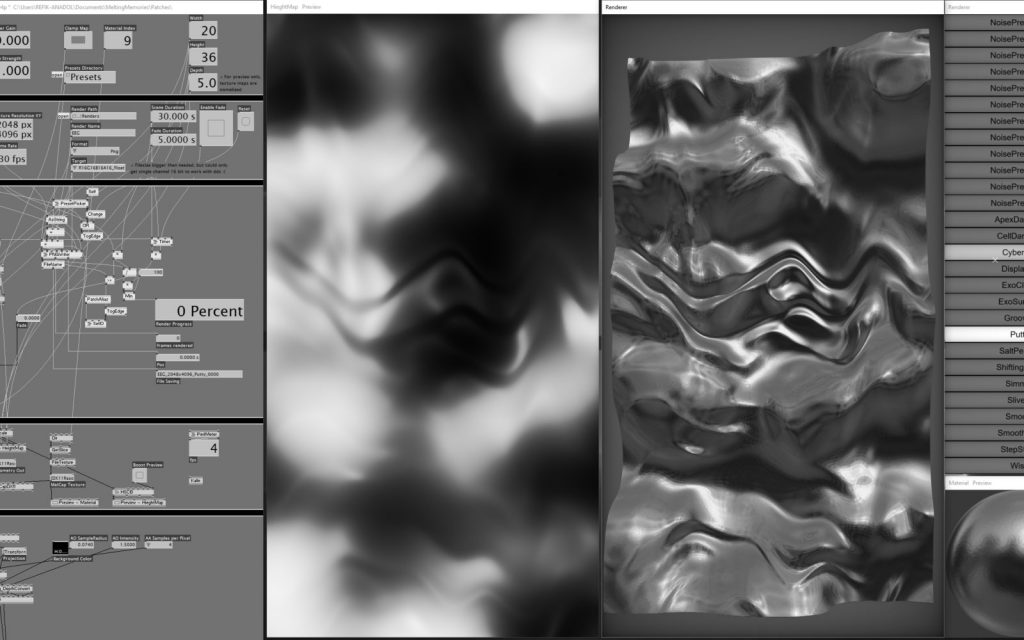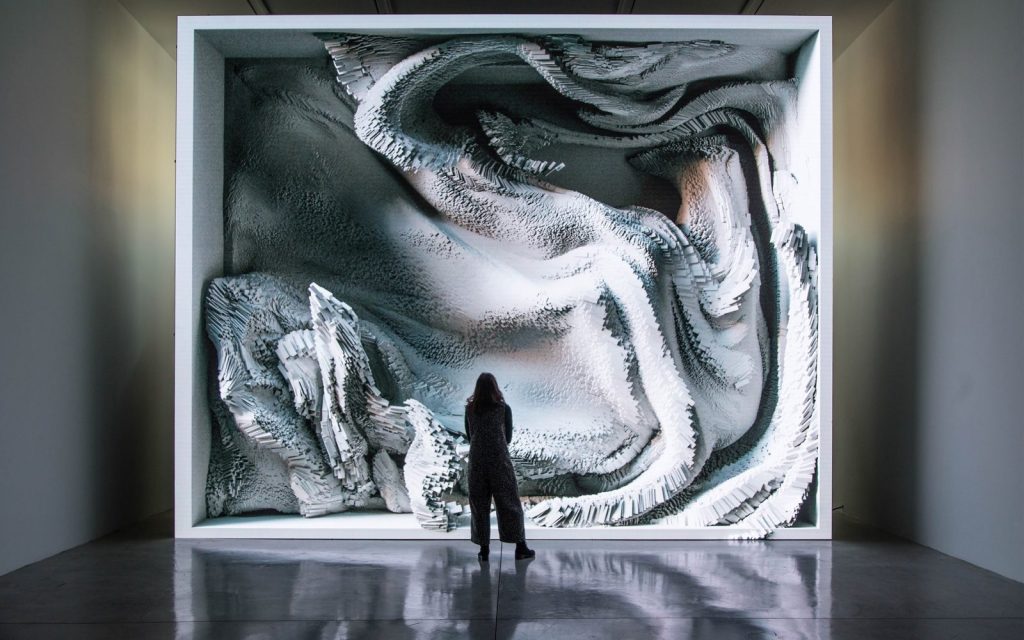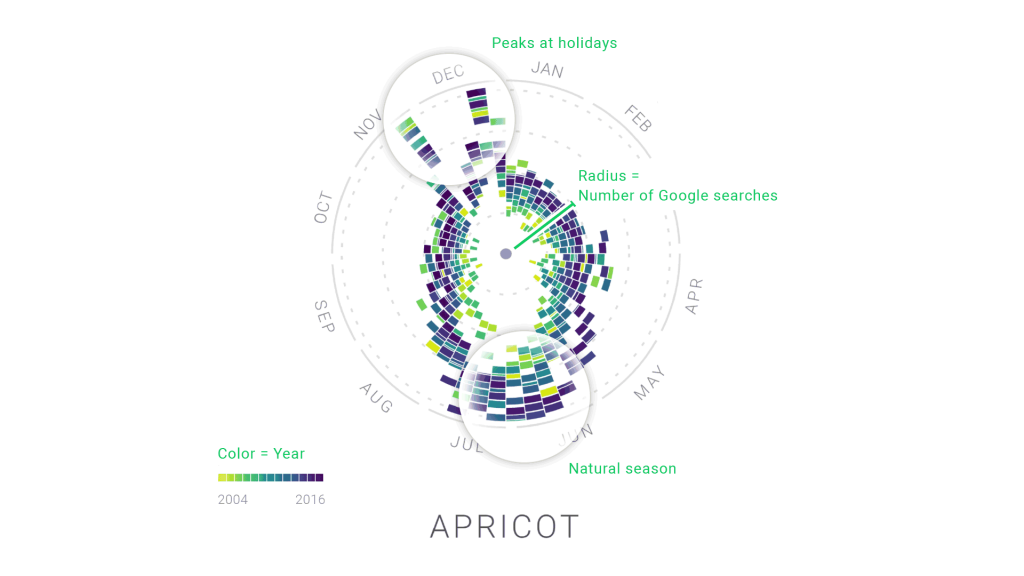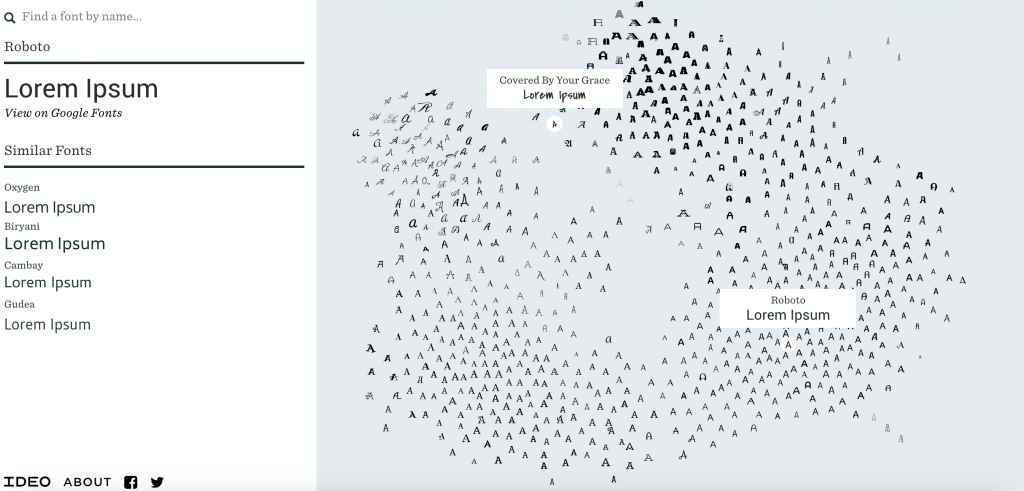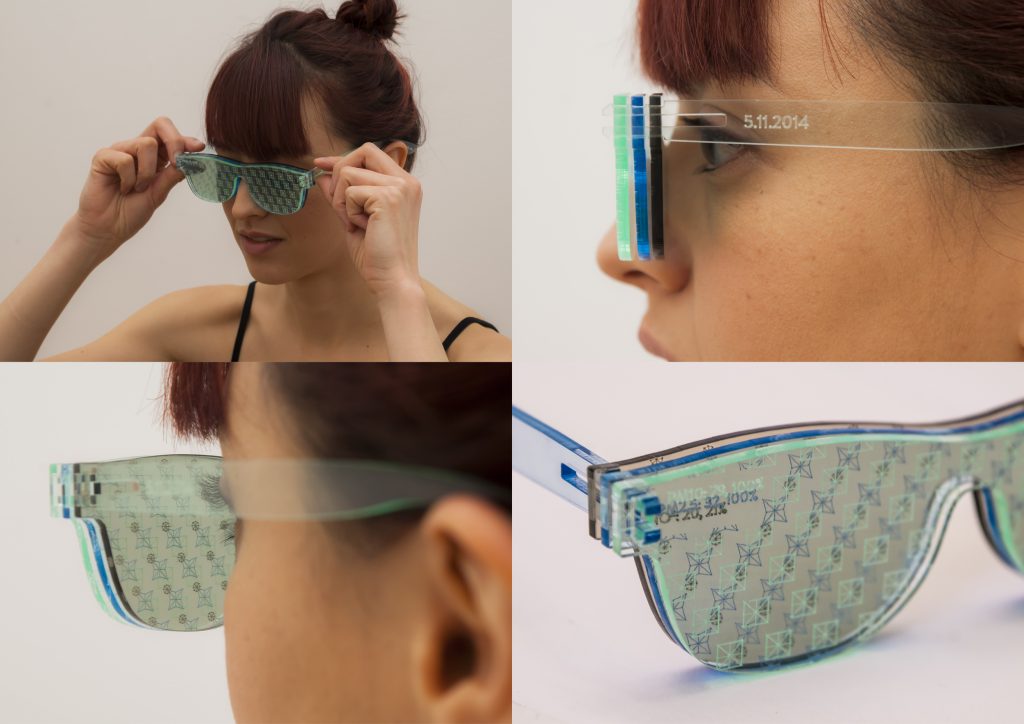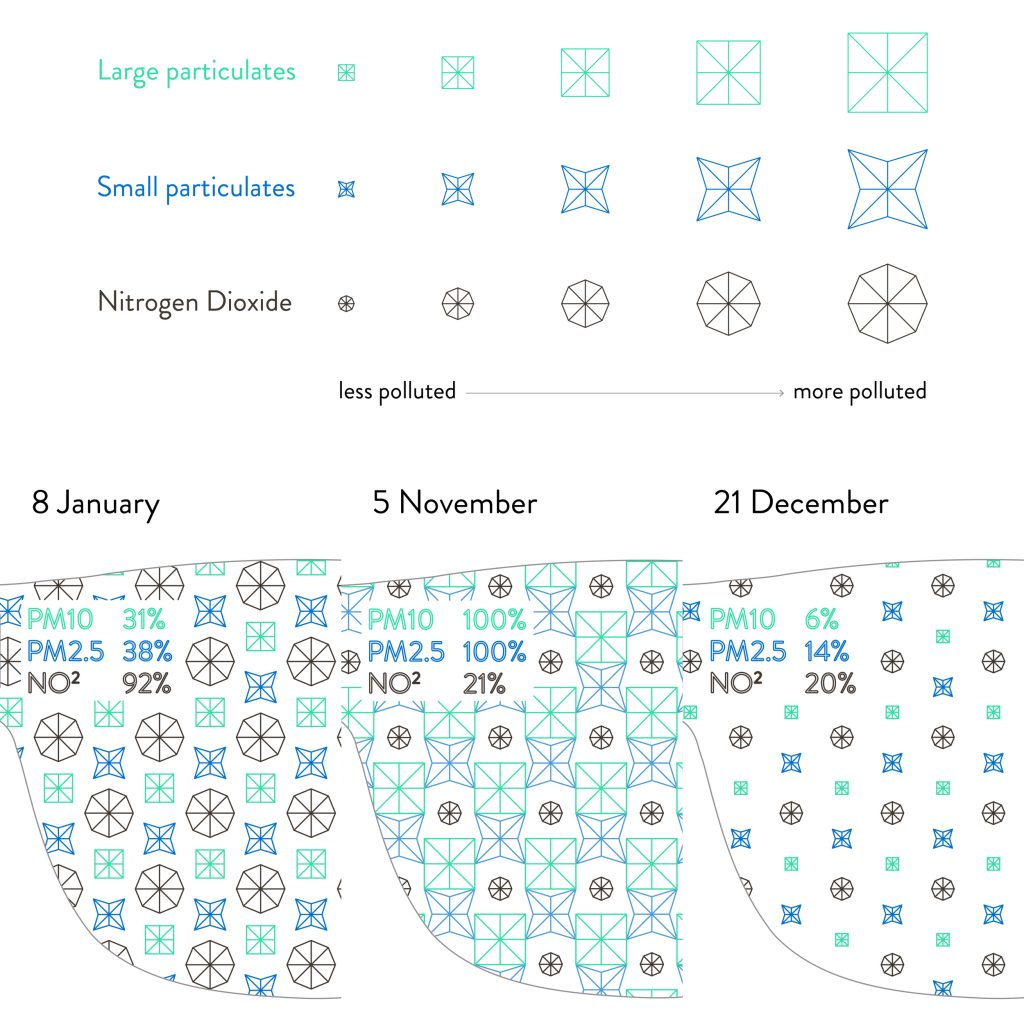Twenty-two thousand years ago, the Bow Glacier slowly carved its way east from the Rocky Mountains, briefly sculpting the land on which the city of Calgary sits upon today. Today, the glacier melts into Bow Pond before finding its way to Bow Lake, leaving waterfalls at many of these intersections. Drinking water in Calgary commonly originates from the melted ice of the glacier, so the glacier quite literally resides in the residents of the city.
Collaborators Ben Rubin, Shah Selbe, and Dr. Jeffrey Kavanuagh curated a data visualization of the interrelationship between the Bow Glacier’s everchanging physical transformations and human activity in Calgary. The visualization connects the urban fabric with nature, suggesting that humans are never actually without it.
To visually represent the “heartbeat” of the glacier, the collaborators wrote programs that produced a cardiotocograph, turning live seismic feed recorded at the glacier into crisp lines against a white background.
This public piece is compelling because it demonstrates the record of data in a style that appears much less crisp and neat than is typically in data visualizations; it aims to suggest a correlation.
![[OLD FALL 2019] 15-104 • Introduction to Computing for Creative Practice](../../wp-content/uploads/2020/08/stop-banner.png)

